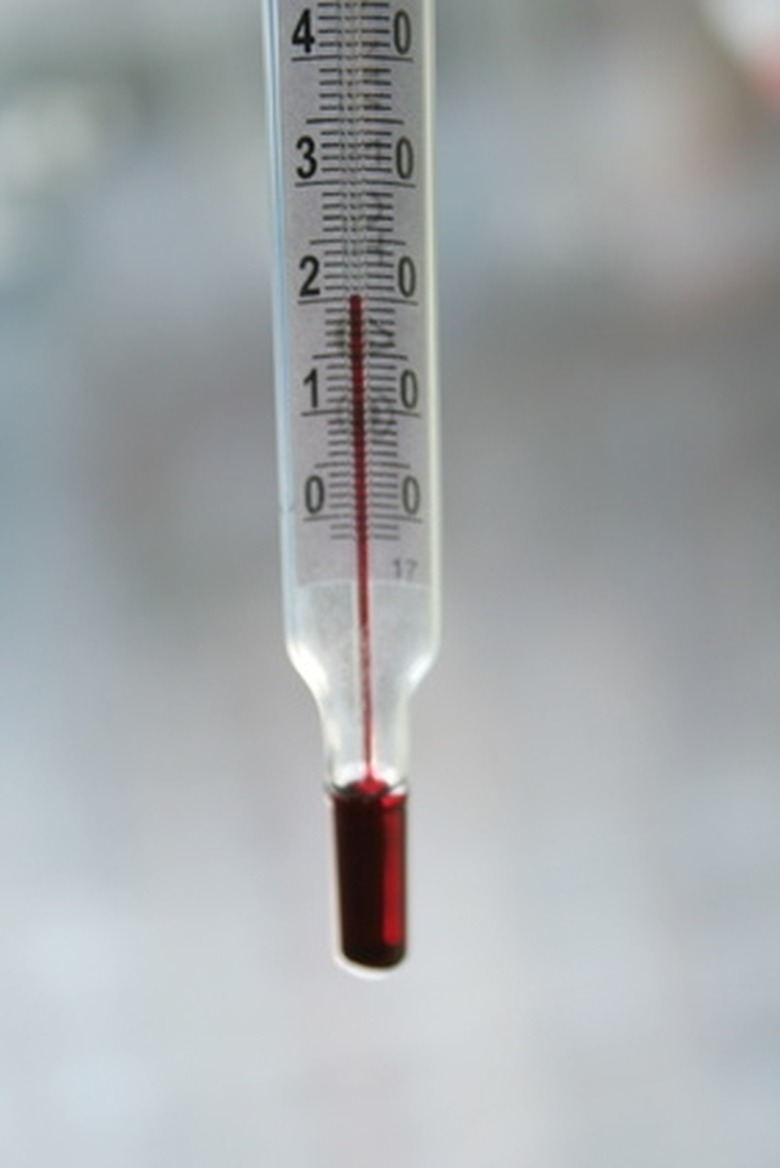How To Measure The Optimum Temperature For An Enzyme
An enzyme is a protein that catalyzes (increases the rate of) chemical reactions. The optimal temperature of most enzymes, or the temperature at which enzymes best facilitate reactions, is between 35 and 40 degrees Celsius. Increasing temperature within this window increases the rate of reaction, because it excites molecules and increases the rate at which enzymes/reactants collide and react to make product. However, increasing temperature too much may denature the enzyme and prevent it from working at all.
Determine the optimal enzyme temperature by heating the reaction by infinitesmal amounts and taking small samples of the reaction, to determine when maximum rate of producing product occurs.
Step 1
Select a method. Determine how you are going to measure the concentration of your product at various points in the experiment. For instance, you can measure the concentration of many products using a spectrophotometer and calculating the concentration from the absorbance, or by measuring fluorescence and calculating concentration from fluorescence.
Step 2
Set up your experiment. Place your reactants and enzyme in a small container with a lid, such as a scintillation vial. Reaction will commence. Place the scintillation vial in a larger beaker of room temperature water. Place the beaker on a heating plate. Place a thermometer inside the beaker. This allows you to measure the temperature of the reaction at various points.
Step 3
Take a 100 microliter sample of the reaction at room temperature, about 25 degrees Celsius. Turn the heating plate on. At various temperatures between 30 and 40 degrees Celsius (30.5, 31, 31.5, etc.) take 100 microliter samples of your reaction.
Step 4
Determine the concentration of your product at each temperature. When the temperature rises above 40 degrees Celsius, you will see a decrease in the rate at which substrate is converted into product, because the enzyme is denatured. The point at which the product is being produced at the maximum rate is the point at which the temperature is at its optimum.
Things Needed
- Enzyme
- Substrate
- Assay kit for product
- Scintillation vial
- Beaker
- Heating plate
- Thermometer
Cite This Article
MLA
Lobo, Tricia. "How To Measure The Optimum Temperature For An Enzyme" sciencing.com, https://www.sciencing.com/measure-optimum-temperature-enzyme-7837537/. 24 April 2017.
APA
Lobo, Tricia. (2017, April 24). How To Measure The Optimum Temperature For An Enzyme. sciencing.com. Retrieved from https://www.sciencing.com/measure-optimum-temperature-enzyme-7837537/
Chicago
Lobo, Tricia. How To Measure The Optimum Temperature For An Enzyme last modified August 30, 2022. https://www.sciencing.com/measure-optimum-temperature-enzyme-7837537/
